
If you search for Tarot online, you’ve probably noticed a new trend in the marketplace: E-commerce listings for decks at insanely low prices. Often shipping from overseas, these cheapo decks dominate search results on popular shopping sites. Yep, the tsunami of imported knockoffs has finally (and predictably) swamped Tarot-town.
Some buyers of pirated decks know they’re buying a fake copy and just don’t give a damn. But reviews and social media pages are full of comments from regretful shoppers who thought they were getting a bargain on a genuine deck. Fortunately, if you choose, you can easily avoid buying a counterfeit Tarot deck. In this article, we’ll look at ways to sniff out fake Tarot, and why you should care. (By the way, this info applies to oracle and Lenormand decks, too.)
First clue: Price
Buying cliché #1: If it looks too good to be true, it probably is. Counterfeit deck sellers entice shoppers with low, low prices. Tarot decks can seem like an expensive purchase, especially to first-time buyers. As a result, there are plenty of customers looking for a bargain.
New Tarot decks from major publishers usually cost $20-25. For indie decks and decks with deluxe packaging, the price is closer to $35-40. Retailers usually pay at least half of the publisher’s price (plus shipping and other expenses). How can anyone be selling a Tarot deck for $5, as in the photo below?
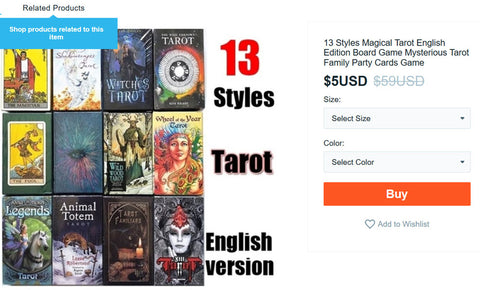
The answer: They’re using the cheapest materials and labor available, not paying any artists or writers, and shipping the deck to you using the slowest method and shoddiest packaging possible. If the Tarot deck you’re looking at is deeply discounted, that’s the first sign that it’s a shady deal.
Second clue: Quality
Buying cliché #2: You get what you pay for. Pirated Tarot decks look chintzy on their own, and even worse when compared to an authentic version of the same title.
Fake decks are almost always smaller than a standard deck—a fact that many disgruntled buyers point out in their reviews. Cardstock is thin and print quality is poor. The images may be cropped, stretched, pixelated, or colored differently than the artist intended. Corners are often square rather than rounded. Cards are packaged in a random order (sometimes with missing cards). The deck may not include an instruction booklet, making it very difficult for a beginning reader to interpret. I’ve even seen decks sold with no titles on the cards (presumably because the titles from the Chinese-language bootleg were removed and replaced with blank spaces)!
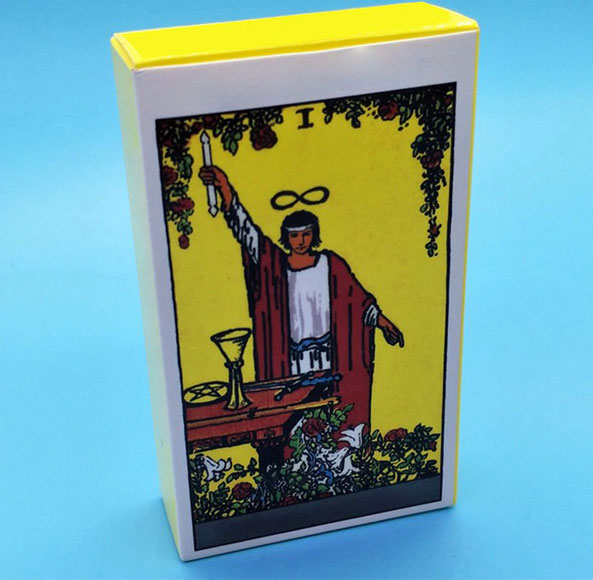
It’s true that many mainstream and independent Tarot decks are printed in China. But that doesn’t put them on the same playing field as the knockoffs. Reputable publishers intend their decks to be sold in fine bookstores and cherished for years. They work with the best printers and do rigid quality control. Bootleg Tarot is sold as a flavor-of-the-month novelty item, sure to wind up on the trash heap with flower crowns and fidget spinners.
Try comparing photos of the bargain deck with the publisher’s or artist’s website. Any inferior-looking copies are probably fakes.
For example, a fake Shadowscapes Tarot box image compared to a real one. Note the different cover picture, no artist’s name, and smaller size.

Third clue: Packaging
Packaging for pirated Tarot is minimal and never looks quite...right. Bootleg decks usually come in a thin tuck-top box, regardless of the original deck’s format. They often have no text on the outer box, so the deck can be shipped to as many countries as possible without re-packaging.
Another dead giveaway? A QR code (that links back to the seller for quick purchasing). I’ve never seen a legit deck with a QR code on the box.
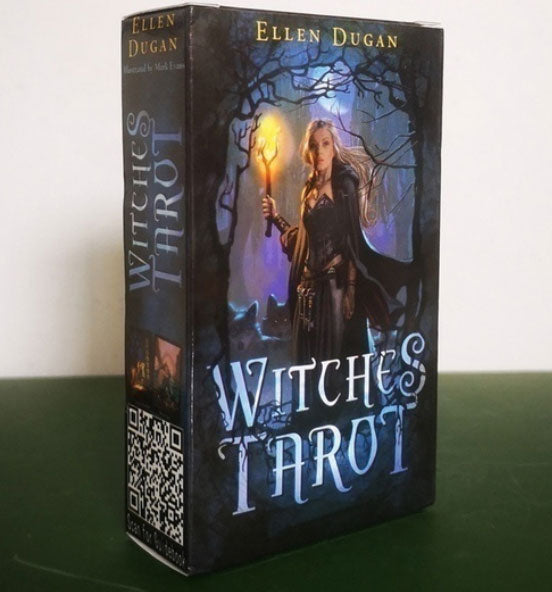
In contrast, authentic decks have detailed packaging that reflects what’s inside. The box will usually contain an ISBN number, country or region of manufacture, publisher’s name (popular publishers are US Games, Llewellyn and Lo Scarabeo), the artist’s name, and any appropriate seals or trademarks. It’s really very easy to spot a fake if you examine the packaging, since most counterfeiters don’t go to the trouble to make the box look good.
Fourth clue: Marketplace
If you buy a Tarot deck on Aliexpress or Wish, there is a 0% chance that it is genuine. Sorry. It’s pretty much a natural law: Order suspicious Chinese crap, receive suspicious Chinese crap. The surest way to get an authentic deck is to order directly from the artist/publisher, or from a Tarot retailer you trust.
Third-party marketplaces like Walmart.com, Amazon, and eBay are a mixed bag. The US versions of these sites do not allow counterfeit versions of copyrighted material. (So say their terms of service documents.) And yet, they are happy to make money from fees while infringement claims are being investigated.
We have sold thousands of Tarot decks on eBay, all of them genuine. But there are fakes on US-based shopping sites, too. So let price be your guide. And location—beware of items shipping directly from Asian countries.
I would like to point out that not all overseas sellers are misleading. Some are totally upfront about the fact that their wares are pirated or incomplete. Here’s a gem from a Wish bootleg Tarot listing:
Please Note: Haven't guide book !!!! Haven't guide book !!!! Haven't guide book !!!! Haven't guide book !!!! This Tarot is NOT Origin, it with Different Size and Thickness and much cheaper price. If you are looking for a original one please do NOT order. Thanks.
Yep, I think that pretty much says it all!
Fifth clue: Title
Some decks show up again and again in counterfeit listings, causing much consternation to their artists and copyright holders. Here are some of the decks that are most frequently pirated:
Wildwood Tarot
Rider-Waite Tarot
Smith-Waite Centennial Tarot
Shadowscapes Tarot
Wheel of the Year Tarot
Tarot Familiars
Witches Tarot
Buckland’s Romani Tarot
Starman Tarot
Unfortunately, I expect this list will get longer as the market for Tarot continues to grow.
Why should I care?
So what, you say? If I can get a Tarot deck for a few bucks, and it works for readings, what difference does it make if it’s pirated?
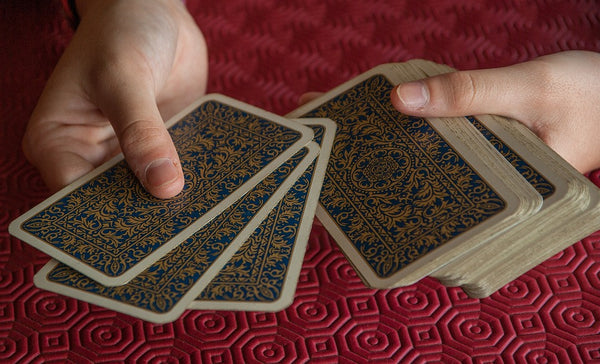
True, if all you cared about is price, you probably stopped reading this article a few paragraphs ago and are now happily clicking over to the fakies. But here are my arguments anyway:
Buying authentic Tarot decks supports writers, artists, retailers, publishers and teachers within the broader metaphysical community. Buying knockoffs supports people with little connection to the Tarot and no respect for intellectual property.
Fake decks hurt artists. I don’t feel particularly bad about the Rider-Waite deck being copied. The creators are long dead and the images would be in the public domain by now, if not for publisher shenanigans. Same goes for some historic Tarots. Although I hate the idea of a beginner getting started with a subpar Rider-Waite deck, that’s their choice, I guess.
What really sucks is that living artists have to see their work bastardized on bargain sites. As author Ellen Dugan wrote in a September 2019 Facebook post, “I am so mad right now. Once again my Witches Tarot has been pirated.” The deck in question has been repeatedly printed in a cheap cards-only pirated edition, sold without the author’s accompanying book.
Ask any professional artist or creator: It’s not a compliment when someone steals your work. It provokes feelings of powerlessness and outrage and real financial concern. Unfortunately, artists have little recourse—especially against sellers overseas. All they can really do is hope that Tarot enthusiasts will support them by paying for the real thing.
Beyond the issue of artists’ rights: I believe Tarot is special. Once upon a time, Tarot decks were hard to find, and I believe they work better when they retain some of that mystical allure. Bootleg decks look like something from the dollar store. The cards don’t have that glossy sheen and don't hold up to repeated shuffling like the real thing does. They may be fine as a lark or a cute photo prop—but if you’re serious about your Tarot studies, you deserve better. A quality Tarot deck can last many, many years and quickly earns back its sticker price.
I have to bite my tongue when someone comes into my shop and asks why I charge $22 for a deck they saw on Wish for $7. (The shortest—and politest—answer: It’s not the same deck.) The implicit accusation is that Tarot sellers are making money hand over fist by overcharging for paper.
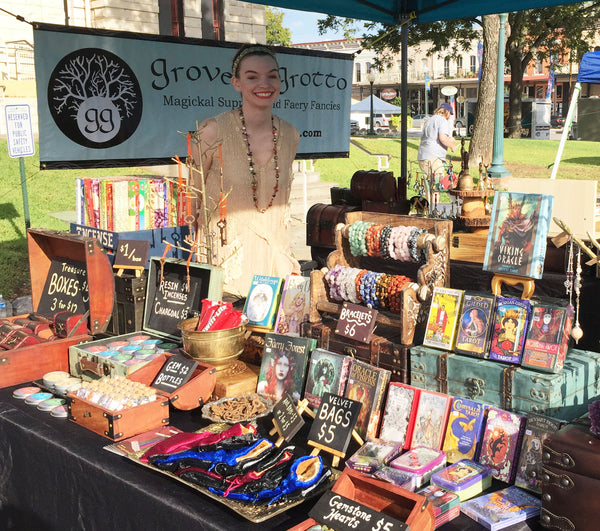
Actually, Tarot is one of our least profitable items at Grove and Grotto. It’s the same for most shop owners: Tarot and oracle decks have the lowest margins, and they’re involved in the most fraudulent transactions and thefts. Personally, I carry decks because customers enjoy them and I take pride in offering a wide selection. And like you (presumably), it makes me happy to support artists and writers who are contributing to the art of Tarot.
What can I do?
In short: Don’t buy fake decks, don’t share or link to their listings, and don’t encourage your friend when he gushes about the awesome Tarot bargain he found on some shopping app.
If you have unknowingly bought a fake deck, exercise your rights as a buyer. Most bootleg sellers don’t offer returns or post-sale support. But if you paid using PayPal or a credit card, you can sometimes get a refund if you alert the payment processor that the merchandise is counterfeit. (Especially if the seller represented it as genuine.) With enough open cases and chargebacks, selling pirated goods online will no longer be profitable for these scammers.
If you are a fan of a deck that is being pirated, consider alerting the publisher or artist. They may not be aware the deck is being illegally copied. It is very hard for an artist to get pirated decks scrubbed from shopping sites, but they can at least warn their supporters that fakes are out there.
If you are an artist whose Tarot art has been swiped, I’m sorry. Your publisher (if you have one) may be willing to take legal action on your behalf since they are also losing sales to the counterfeiters. You can also report the listing to the website.
Sadly, in my experience, the Chinese sites are completely unresponsive when it comes to removing copyrighted images from their platforms. I have found my original photos on these sites many times. It’s maddening and unfair—but there are plenty of customers who do respect your work and want you to get paid.
I hope you have found this article interesting and informative. If it saves even one person from buying a crappy deck they regret, then I've done my job.
Thanks for reading, and check out more articles in the archive!
